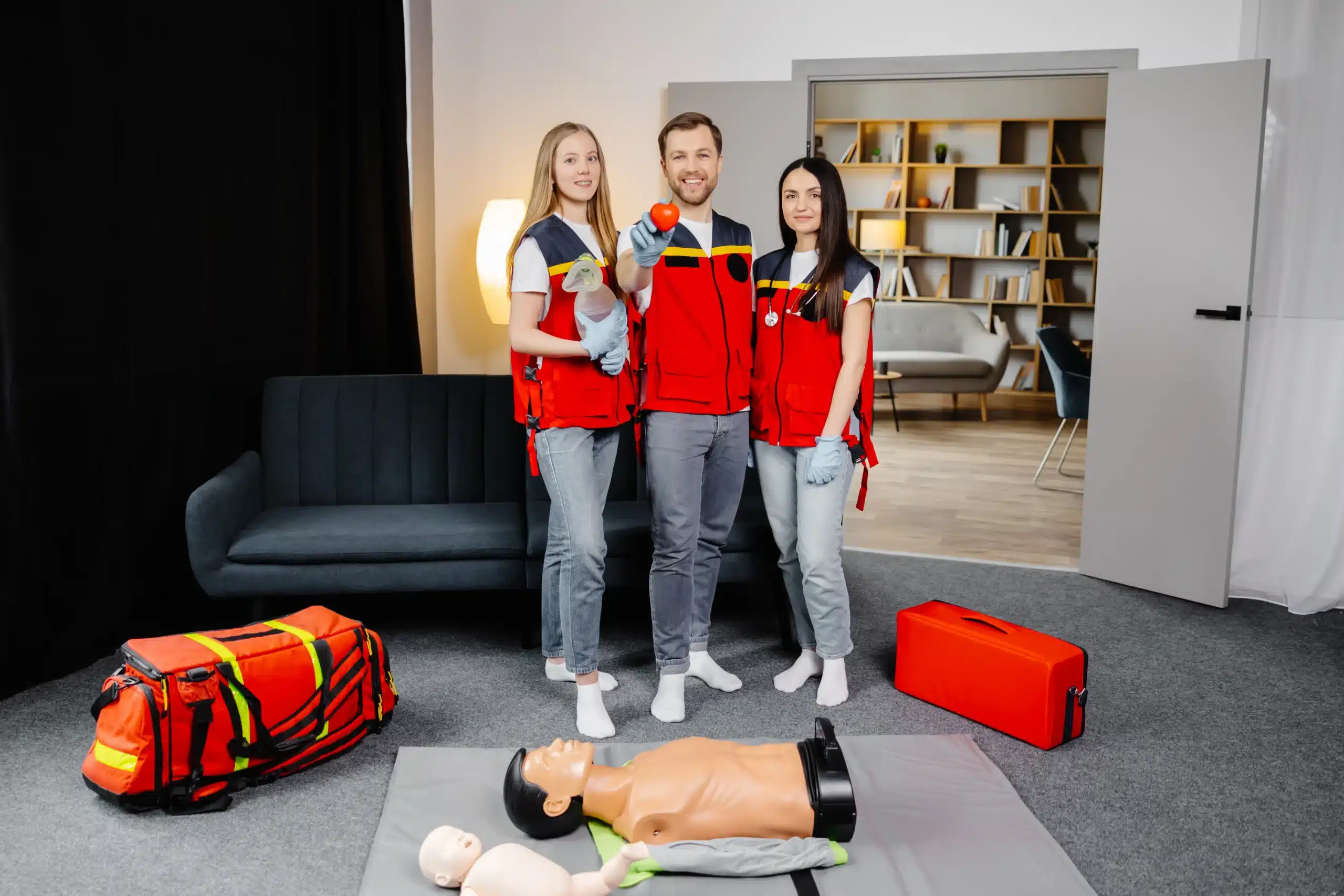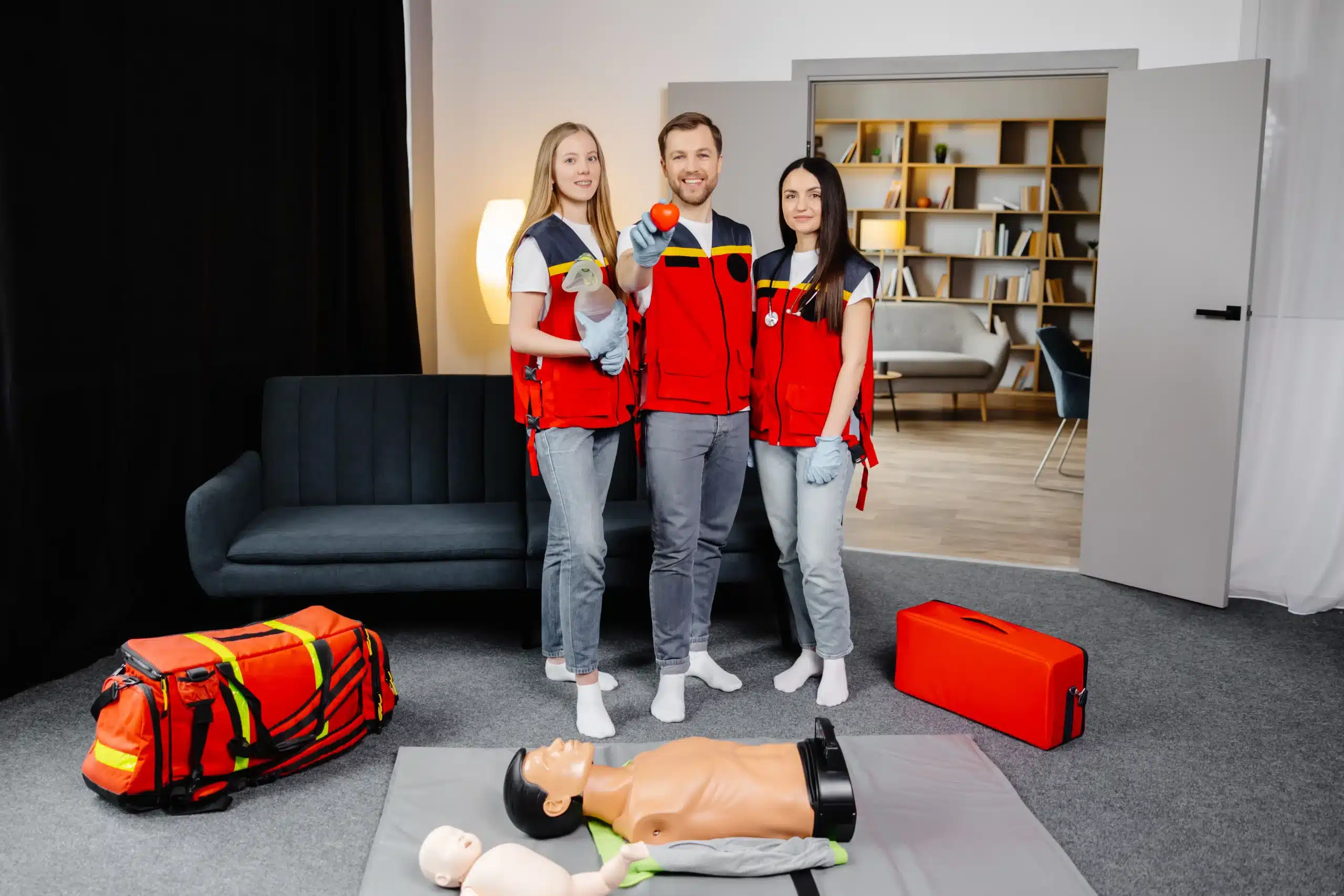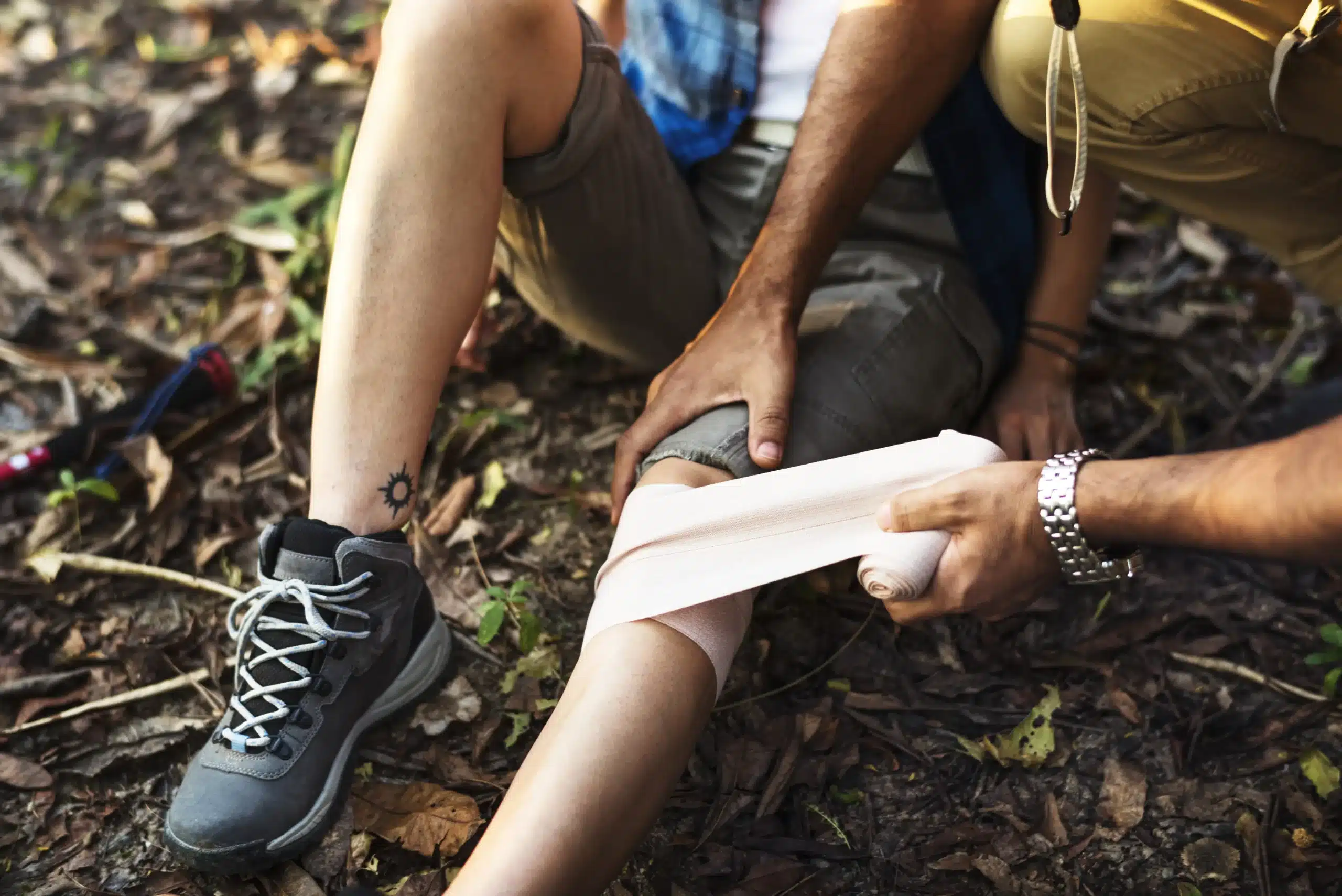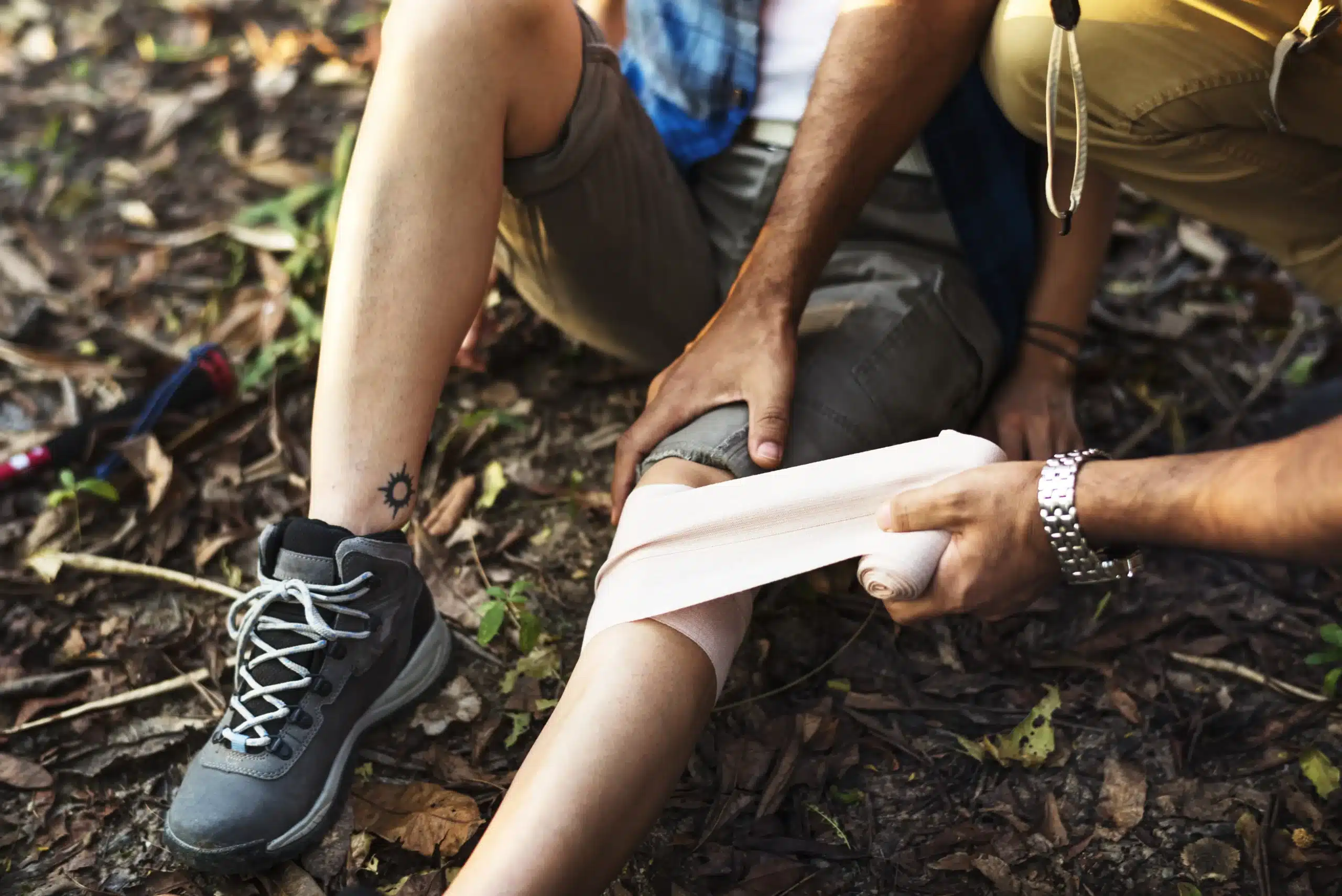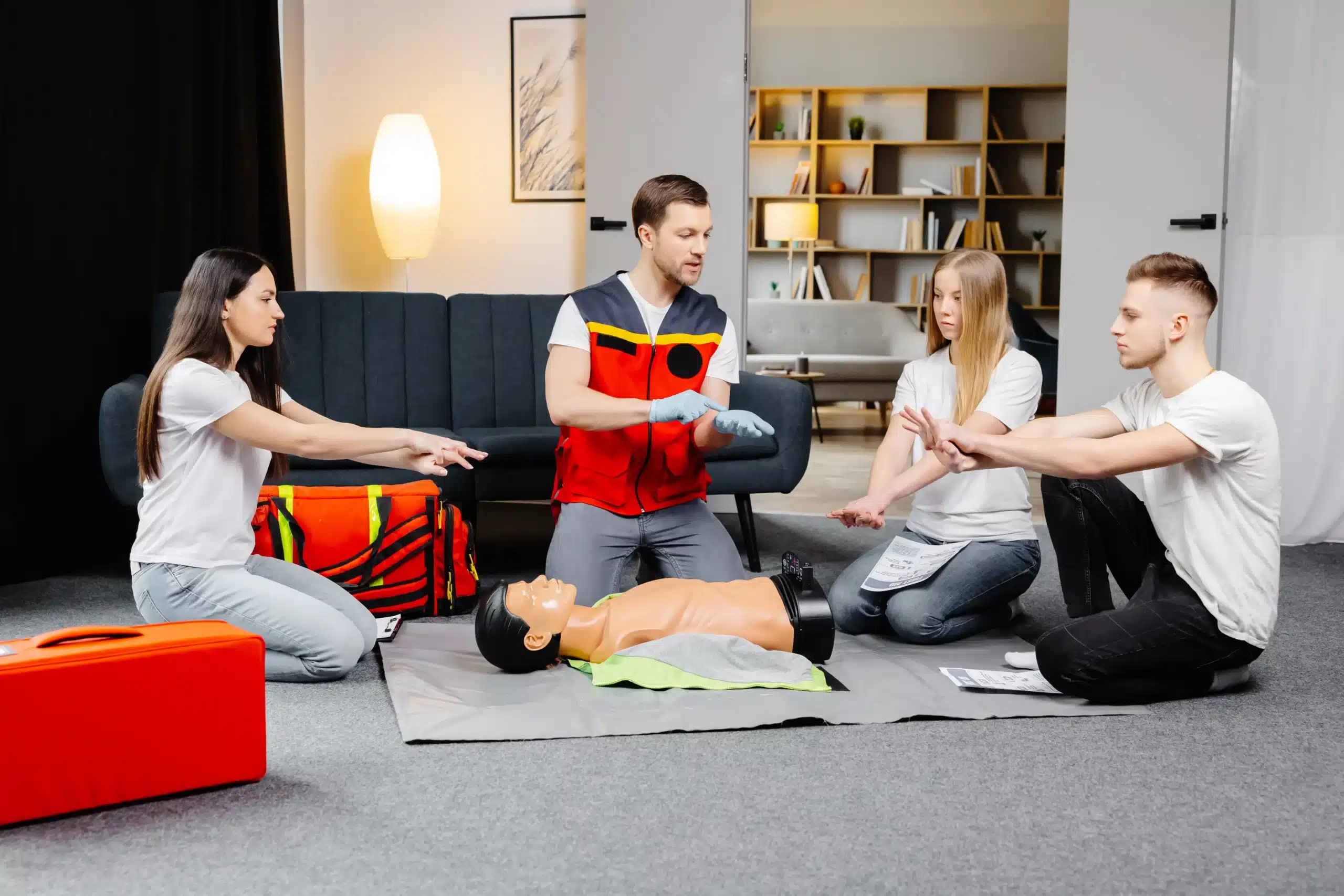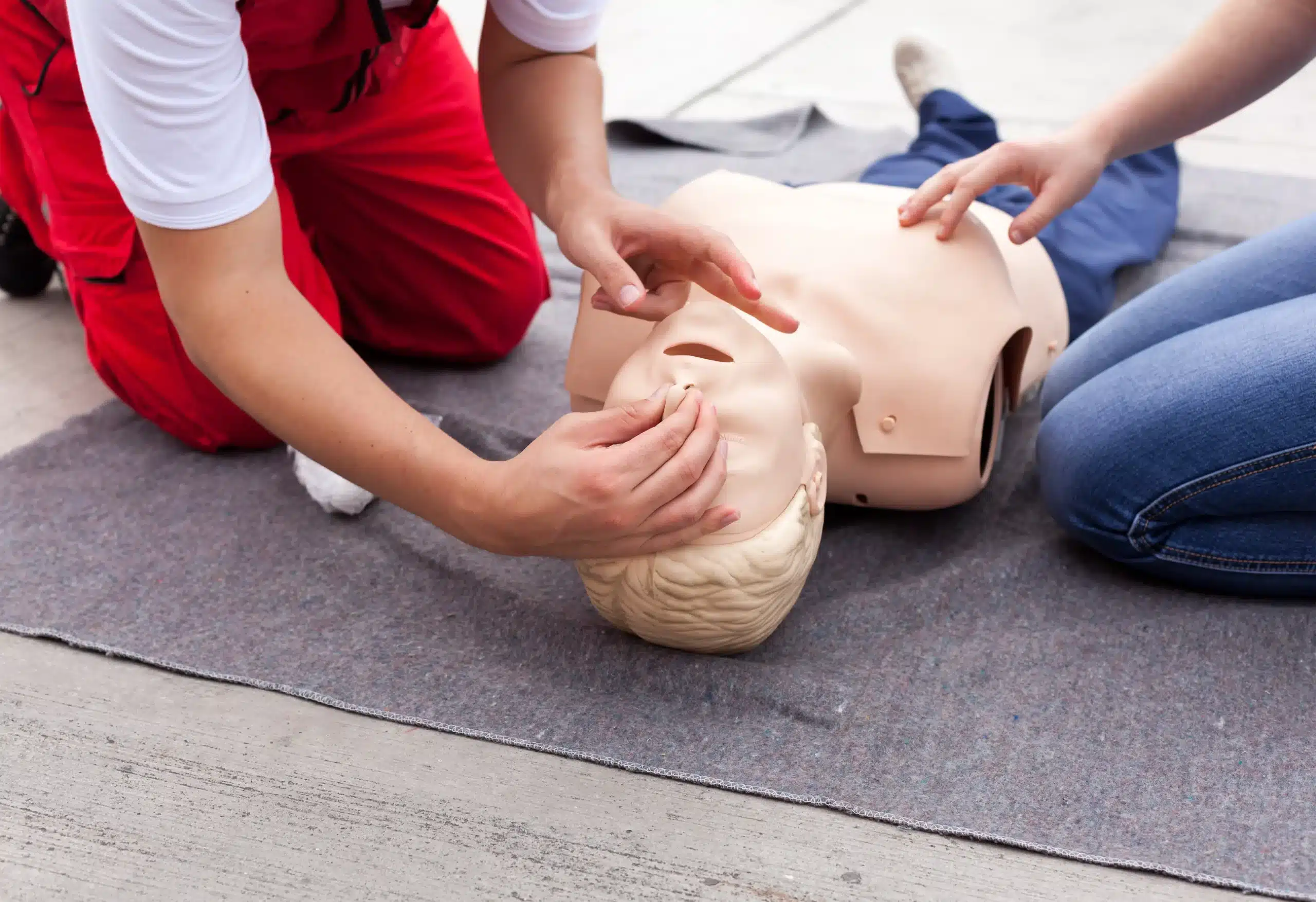Knowing how to perform BLS can make a real difference in an emergency. But what happens when your certification expires? Don’t let your skills lapse! This guide will walk you through the process of BLS recertification, answering all your questions along the way. We’ll cover everything from the core components of BLS to finding a course that works for you, including tips for searching “BLS recertification near me.” We’ll also discuss the importance of choosing a reputable provider and how to prepare for your recertification course. Let’s ensure you’re always ready to respond with confidence.
Key Takeaways
- Regular BLS recertification maintains your life-saving skills and keeps you up-to-date on the latest guidelines. Prioritize renewing your certification every two years before it expires to avoid repeating the entire course.
- Choosing the right course format and provider is key to a successful recertification experience. Consider in-person, online, or hybrid options based on your learning style and schedule. Evaluate providers based on instructor qualifications, course materials, and student reviews.
- Active participation and preparation are essential for maximizing your learning. Set personal learning goals, review key concepts beforehand, and actively engage during the course to solidify your skills and boost your confidence.
What is BLS Recertification?
BLS recertification is how healthcare providers and other professionals maintain their Basic Life Support skills. It’s a refresher course required every two years to ensure you’re up-to-date on the latest life-saving techniques. Your BLS certification expires every two years, but you typically have a 30-day grace period for renewal. If you happen to miss that window, you’ll likely need to retake the full BLS course rather than just a recertification class. Think of it like renewing your driver’s license—it confirms your skills are current and you’re prepared to respond effectively in an emergency.
Key BLS Recertification Components
BLS recertification courses cover core life-saving skills, including high-quality CPR, using an AED, and relieving choking. These courses, offered by organizations like the American Red Cross and the American Heart Association, often include a written exam and skills demonstration. You’ll receive a new certification card upon successful completion, valid for another two years. Many providers offer digital certificates as well, which are easy to access and share with employers.
Why Stay Current?
Staying current with your BLS recertification is crucial for several reasons. Refresher courses reinforce best practices for chest compressions, rescue breaths, and overall resuscitation techniques. Plus, guidelines and protocols can change, so recertification ensures you’re using the most effective methods. Ultimately, maintaining your BLS skills increases the chances of positive outcomes in emergencies. It also demonstrates your commitment to providing high-quality care and keeps you compliant with workplace requirements. For healthcare professionals, it’s often a mandatory condition of employment and demonstrates your dedication to patient safety.
Find BLS Recertification Providers Near You
So, your BLS certification is about to expire—now what? Don’t worry, finding a recertification course is easier than you think. This section breaks down how to find reputable providers and choose the best option for your needs.
Safety Training Seminars in Napa
If you’re in Napa, American Canyon, or Vallejo, Safety Training Seminars offers various American Heart Association courses, including BLS, ACLS, and PALS. They focus on providing excellent customer service and competitive prices, making them a convenient and affordable local option. Plus, they offer the RQI program for healthcare professionals needing to renew their resuscitation skills. Check their website for course schedules and registration information.
Other Local Options
Beyond Safety Training Seminars, you have other choices for BLS recertification. The American Red Cross offers both in-person and online recertification courses, providing flexibility for different learning styles and schedules. Searching online for “BLS recertification near me” will also turn up local hospitals, community centers, and other training organizations.
Evaluate Provider Credentials
Before signing up for any course, it’s essential to do your homework. Look for providers affiliated with reputable organizations like the American Heart Association or the American Red Cross. These organizations maintain high standards for training and certification. Also, consider the provider’s experience, instructor qualifications, and the quality of their course materials. Hospitals and clinics often provide excellent BLS training, as they prioritize up-to-date, evidence-based practices. Finally, don’t hesitate to read reviews and ask for recommendations from colleagues or friends. Choosing a quality provider ensures you receive comprehensive training that meets current AHA guidelines.
BLS Recertification: Cost and Value
Getting recertified in Basic Life Support (BLS) is an investment in your skills and the safety of those around you. Understanding the costs and recognizing the value can help you make informed decisions about your training. Let’s break down the typical expenses and explore why BLS recertification is worthwhile.
Average Costs
BLS recertification costs vary based on your location, the training provider, and the course format. Generally, you can expect to pay between $70 and $120 for a comprehensive BLS renewal course. Providers like Safety Training Seminars offer competitive rates, ensuring high-quality training remains accessible. Check directly with your chosen provider for their most up-to-date pricing. You can often find this information clearly displayed on their websites, such as the BLS course page on the Safety Training Seminars website. Remember, the lowest price isn’t always the best indicator; look for a balance of affordability and a solid reputation.
Factors Influencing Price
Several factors can influence the cost of your BLS recertification. The inclusion of study materials, like manuals or online resources, can sometimes affect the price. Some providers bundle these materials into the course fee, while others may offer them as an optional add-on. The course format—in-person, online, or blended—can also play a role in the final cost. When comparing providers, inquire about what’s included in the course fee. For example, Safety Training Seminars clearly outlines what their BLS course covers.
Promotions and Discounts
Many training centers offer promotions and discounts for BLS recertification, making it even more cost-effective to stay current with your skills. Keep an eye out for special offers, especially during certain times of the year or for group registrations. These discounts can make a real difference in the final price. Check with Safety Training Seminars about potential discounts for your BLS recertification. The benefits of staying certified are numerous, from improved resuscitation techniques to increased confidence in your abilities. It allows you to respond effectively in emergencies, contributing to safer communities.
Group Registration Benefits
If you’re coordinating training for a group, like workplace colleagues or community members, explore group registration discounts. Many providers offer reduced rates for group bookings, making it a smart and economical choice. This can be a great way to equip your team with essential life-saving skills while saving on individual course fees. Contact Safety Training Seminars to learn about group discounts for their CPR and safety training classes. Equipping a team with these skills creates a safer environment for everyone and shows a commitment to preparedness.
Choose the Right BLS Recertification Format
Finding the right BLS recertification course depends on your learning style, schedule, and budget. Let’s break down the most common formats: in-person, online, and hybrid, so you can choose what works for you.
In-Person Training
Traditional in-person training offers a hands-on learning experience with direct interaction with an instructor. This format is great for real-time feedback on your technique and allows you to practice skills in a controlled environment. Organizations like the Red Cross offer in-person BLS renewal and recertification, making it easy to find a class. If you thrive in a structured classroom setting and value face-to-face instruction, in-person training might be a good fit.
Online Courses
Online BLS recertification courses offer flexibility and convenience. You can learn at your own pace, on your own time. The American Heart Association (AHA) offers online courses as a convenient way to renew your BLS certification. This format often involves interactive modules, videos, and simulations. If you have a busy schedule or prefer self-directed learning, an online course could be a good choice. Resources like Berkeley CPR Classes offer more information on online BLS recertification.
Hybrid Options
Hybrid courses combine online learning with in-person skills sessions. This lets you complete the cognitive portion of the course online at your convenience and then attend a shorter, hands-on session to practice your skills. The AHA confirms that blended learning formats are available for BLS courses. This format offers a balance of flexibility and hands-on practice.
Pros and Cons of Each Format
Each format has its own advantages and disadvantages. In-person training provides personalized feedback and hands-on practice but can be less flexible. Online courses offer convenience and self-paced learning but may lack the direct interaction of a classroom. Hybrid courses offer a balance of both but require coordinating both the online and in-person components. Consider your learning style, schedule, and budget when making your decision. Bay Area CPR highlights the benefits of BLS recertification, no matter the format. Remember to factor in the total cost, which varies. For example, Berkeley CPR Classes often bundles online coursework, the skills test, and your certification card into their pricing. By weighing the pros and cons, you can choose the best option to meet your needs and ensure you’re prepared to provide high-quality BLS.
BLS Recertification: Duration, Frequency, and Planning
Knowing what to expect time-wise and how often you’ll need recertification makes planning simpler. This section covers the key details about BLS recertification duration and scheduling.
Course Length and Content
BLS renewal courses refresh your essential life-saving skills efficiently. A typical BLS renewal course takes about three hours. This includes hands-on skills practice and a skills test so you’re ready to respond confidently in an emergency. You’ll review core concepts like high-quality CPR for adults, children, and infants, how to use an AED, and relieving choking. For specifics on what our course covers, visit our BLS renewal course page.
Recertification Timeline
Your BLS certification is valid for two years. There’s no grace period after it expires. To maintain your certification without interruption, complete a renewal course and pass the exam before your current certification expires. Stay ahead of the game by planning your renewal in advance.
Tips for Timely Renewal
The best way to avoid retaking the full BLS course is to renew your certification before it expires. This keeps your skills sharp and ensures you’re always prepared. While the renewal course is streamlined, pay close attention during training and review the materials. This will help you succeed on the skills test. Our experienced instructors are here to guide you and answer any questions.
Prepare for Your BLS Recertification
Getting ready for your BLS recertification? A little prep work goes a long way. Here’s what you need to know to feel confident and prepared on the day of your course.
What to Bring
Many BLS renewal courses include training materials, so check with your provider to see what’s covered. For example, Safety Training Seminars in Napa may provide all the necessary resources. It’s always a good idea to bring a notebook and pen to jot down notes, and having a water bottle on hand will keep you hydrated and focused.
Pre-Course Study Tips
While your BLS recertification course will cover everything you need to know, refreshing your knowledge beforehand can be incredibly helpful. Review key concepts like CPR steps, AED operation, and basic airway management. Save A Life CPR offers helpful advice on renewing BLS certification, including reviewing materials thoroughly before the exam. Pay close attention during the course, ask questions if anything is unclear, and actively participate in practice scenarios.
Key Skills to Master
BLS certification covers essential emergency response skills. You’ll want to be comfortable with cardiopulmonary resuscitation (CPR), automated external defibrillator (AED) usage, and basic airway management. Understanding the algorithms for adult, child, and infant CPR is crucial. Don’t hesitate to ask your instructor for extra guidance on any of these skills. My CPR Certification Online offers a good overview of these core components.
Clarify Common Misconceptions
There are a few common misconceptions about BLS certification. Some believe it’s only for doctors and nurses, which isn’t true. Anyone can benefit from these life-saving skills. Another myth is that online BLS certification isn’t as credible as in-person training. While in-person training offers hands-on practice, online BLS certification from a reputable provider is absolutely valid. Finally, remember that BLS certification isn’t a one-time thing—it requires regular renewal. American Health Training debunks these and other common myths about BLS certification.
Make the Most of Your BLS Recertification
Getting recertified in Basic Life Support (BLS) isn’t just about checking a box; it’s about maximizing your skills and confidence. Think of it as a chance to refine your abilities and deepen your understanding of life-saving techniques. Here’s how to approach your BLS recertification for the greatest impact:
Set Personal Learning Goals
Before you even start the course, take a moment to identify specific areas you’d like to improve. Maybe you want to become more proficient in giving high-quality chest compressions, or perhaps you’re aiming to master the latest rescue breathing techniques. Setting these personal learning goals will not only give you something to strive for during the course, but it will also help you measure your progress. Having clear objectives makes the recertification process more engaging and helps you retain the information more effectively. As the experts at Bay Area CPR point out, recertification offers significant benefits, including improvements in resuscitation practices and staying up-to-date on the latest techniques. Consider what aspects of BLS you find most challenging and focus on improving those skills during your recertification.
Apply Skills in Real-World Scenarios
BLS skills are invaluable in various real-world situations. Consider how you might apply these skills outside of a training environment. Think about scenarios at home, at work, or even out in your community. Visualizing yourself using these skills can boost your confidence and prepare you to react effectively in a real emergency. Red Cross emphasizes that BLS training is fundamental to workplace safety, empowering individuals to respond confidently during cardiac emergencies, wherever they may occur. Regularly reviewing your BLS skills and mentally rehearsing different scenarios can help you stay prepared.
Continuing Education Opportunities
Your BLS recertification is just one step in your ongoing learning journey. Look for opportunities to expand your knowledge and skills beyond the basic course. This might include advanced cardiac life support (ACLS) training, pediatric advanced life support (PALS) certification, or specialized courses tailored to your profession or interests. Consider taking our ACLS course or our PALS course at Safety Training Seminars. Continuous learning ensures you stay at the forefront of best practices and provides you with a broader skillset to handle diverse emergencies. Red Rock International suggests gathering feedback on your training experiences, which can also help you identify areas for improvement and tailor your future learning. Explore additional resources and certifications to further enhance your expertise.
Choose the Right Provider
Finding the right BLS recertification provider is crucial for a valuable learning experience. It’s more than just a requirement; it’s about mastering skills that can save lives. Here’s what to consider:
Instructor Qualifications
Look for instructors with extensive experience and certifications from reputable organizations like the American Heart Association or the Red Cross. Experienced instructors bring real-world knowledge to the classroom, enriching the learning experience with practical insights. Check the provider’s website or inquire directly about instructor credentials. Their expertise can make all the difference in your understanding and confidence.
Course Materials and Resources
High-quality course materials are essential for effective learning. Ask your provider what’s included in the course fee. Many BLS recertification courses include training manuals and online resources. Some providers, like Berkeley CPR Classes, bundle these materials, saving you money and ensuring you have everything you need. Access to practice materials and online resources can significantly improve your learning and retention.
Post-Course Support
Think about the support offered after the course. Does the provider offer refresher materials, access to online communities, or continuing education opportunities? Solid post-course support reinforces your skills and keeps you updated on the latest BLS techniques. This ongoing support is invaluable as you apply your recertified skills. The benefits of BLS recertification go beyond the classroom, impacting your confidence and ability to respond effectively in emergencies.
Student Feedback and Reviews
Reading reviews from other students offers valuable insights into a BLS recertification provider. Check for reviews and testimonials on the provider’s website or social media. Student feedback provides a glimpse into the learning environment, instructor effectiveness, and overall course satisfaction. Don’t hesitate to ask the provider for references or to speak with past students. Their firsthand experiences can help you make an informed decision.
Related Articles
- BLS Renewal in American Canyon: Your Easy Guide – Napa CPR Classes
- BLS Classes in Vallejo: The Complete Guide – Napa CPR Classes
- BLS for Healthcare Providers in American Canyon – Napa CPR Classes
- BLS Courses in Vallejo: The Ultimate Guide – Napa CPR Classes
- BLS Training in Vallejo: Your Go-To Guide – Napa CPR Classes
Frequently Asked Questions
How long is my BLS certification valid? BLS certification is valid for two years. Plan to recertify before your current certification expires to maintain uninterrupted certification.
What if I let my BLS certification lapse? If your BLS certification expires, you’ll likely need to retake the full BLS course rather than the shorter renewal course. It’s always best to renew before your certification expires to save time and money.
What’s the difference between BLS renewal and recertification? BLS renewal is for those whose certification is still current or within the grace period. Recertification is typically for certifications that have already expired. Both involve updating your skills and knowledge to the latest guidelines.
What are the different ways I can take a BLS recertification course? BLS recertification courses are offered in several formats: in-person, online, and hybrid (a combination of online and in-person). Choose the format that best suits your learning style and schedule.
How can I find BLS recertification courses near me? You can find BLS recertification courses through several avenues. Searching online for “BLS recertification near me” is a good starting point. The American Red Cross and the American Heart Association also have websites where you can locate certified training centers. Local hospitals, community colleges, and private training companies also offer BLS recertification courses. If you’re in the Napa area, check out Safety Training Seminars.

